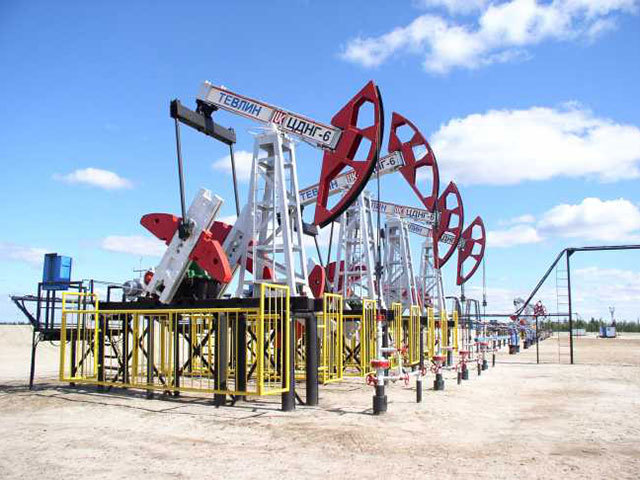
Hedge funds rushed back into oil too quickly, boosting bullish bets amid a rebound last week, only to then watch surging U.S. crude supplies push prices right back down to a two-year low.
The net-long positions in West Texas Intermediate futures rose 5.7 percent in the seven days ended Oct. 21, U.S. Commodity Futures Trading Commission data show. Short bets shrank 20 percent, the most in three months, while longs dropped 2.8 percent.
After rising as analysts speculated prices had reached a floor, WTI sank again after stockpiles climbed nationally and at Cushing, Oklahoma, the delivery point for New York Mercantile Exchange futures. It fell to $80.52 on Oct. 22, the lowest settlement since June 2012, and ended the week down 24 percent from the year’s high. The U.S. benchmark, which slipped into a bear market Oct. 9, may dip to $75 by the end of year, Bank of America Corp. said Oct. 23.
The “swiftness of the selloff” attracted bargain hunters, John Kilduff, a partner at Again Capital LLC, a New York-based hedge fund that focuses on energy, said by phone Oct. 24. “People came in and tried to pick the bottom, and they picked wrong.”
U.S. oil inventories increased 7.11 million barrels in the seven days ended Oct. 17 to 377.7 million, the Energy Information Administration said Oct. 22. Supply has grown by about 21 million in three weeks.
Brent for December settlement decreased as much as 40 cents to $85.73 a barrel on the London-based ICE Futures Europe exchange and was at $85.93 at 1:18 p.m. Singapore time. WTI added 4 cents to $81.05 a barrel.
Domestic production, which hovered near a 29-week high, will climb to 9.5 million barrels a day next year, the most since 1970, according to EIA forecasts.
“The fundamentals are still bearish,” Michael Lynch, president of Strategic Energy & Economic Research in Winchester, Massachusetts, said by phone Oct. 24. “This is going to be a very volatile market in the next few weeks.”
Stockpiles at Cushing rose to 20.6 million barrels in the week ended Oct. 17. Flows into the U.S. oil hub are set to climb further as Enbridge Inc. fills the Flanagan South pipeline from the Chicago area to Cushing. Tallgrass Energy Pipeline was seen increasing rates on the Pony Express line from Wyoming to Cushing in November.
An imminent jump in pipeline capacity to Cushing may temporarily send WTI prices lower, Bank of America analysts including Francisco Blanch in New York said in a report. “Higher inflows and reduced outflows from Cushing may temporarily result in stock builds by year-end,” the report showed.
The Organization of Petroleum Exporting Countries, which supplies 40 percent of the world’s oil, raised production the most in three years to 30.47 million barrels a day in September.
Saudi Arabia, OPEC’s largest producer, stored more oil and supplied less to the market last month, according to a person familiar with the country’s oil policies.
While supply grows, global consumption will increase this year at the slowest pace since 2009, the Paris-based International Energy Agency said Oct. 14.
Net longs for WTI rose by 10,103 to 186,774 contracts futures and options combined during the week ended Oct. 21, according to the CFTC. Shorts tumbled to 69,061 and long positions fell to 255,835.
In other markets, net-long wagers on U.S. natural gas tumbled to the lowest since April 2012 as surging output boosted supplies before winter.
Prices are sinking as production from the Marcellus formation in the East, the biggest U.S. shale-gas deposit, will jump 1.4 percent to a record in November, according to government estimates. New pipelines from the Marcellus will boost deliveries along the East Coast.
Net-long positions fell by 51 percent to 33,352 contracts. The measure includes an index of four contracts adjusted to futures equivalents: Nymex natural gas futures, Nymex Henry Hub Swap Futures, Nymex ClearPort Henry Hub Penultimate Swaps and the ICE Futures U.S. Henry Hub contract.
Futures fell 2.8 percent to $3.711 per million on the Nymex during the report week.
Bullish bets on gasoline grew 29 percent to 31,007, the highest level since August. Futures increased 1.5 percent to $2.2134 a gallon in the report period.
Regular gasoline at the pump, averaged nationwide, slid 0.7 cent to $3.072 a gallon on Oct. 23, the lowest since January 2011, according to Heathrow, Florida-based AAA.
Bearish wagers on U.S. ultra low sulfur diesel slid 8 percent to 31,699 contracts. The fuel advanced 1.7 percent to $2.5132 a gallon in the report week.
Supplies are climbing as demand for oil is down. Refineries operated at 86.7 percent of capacity in the week ended Oct. 17, the lowest since March. U.S. plants typically schedule maintenance for September and October.
“Refinery maintenance is reducing crude oil demand,” Tariq Zahir, a New York-based commodity fund manager at Tyche Capital Advisors, said by phone Oct. 24. “The trend for oil is down. We have a lot of supply.”